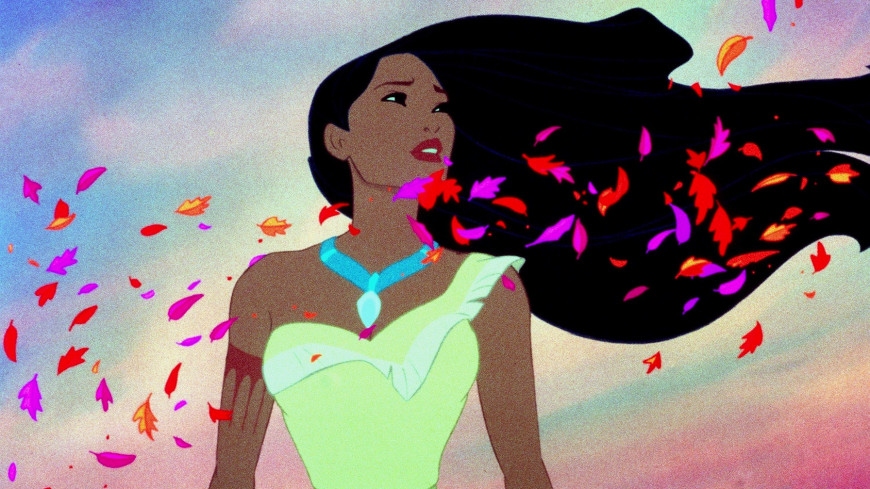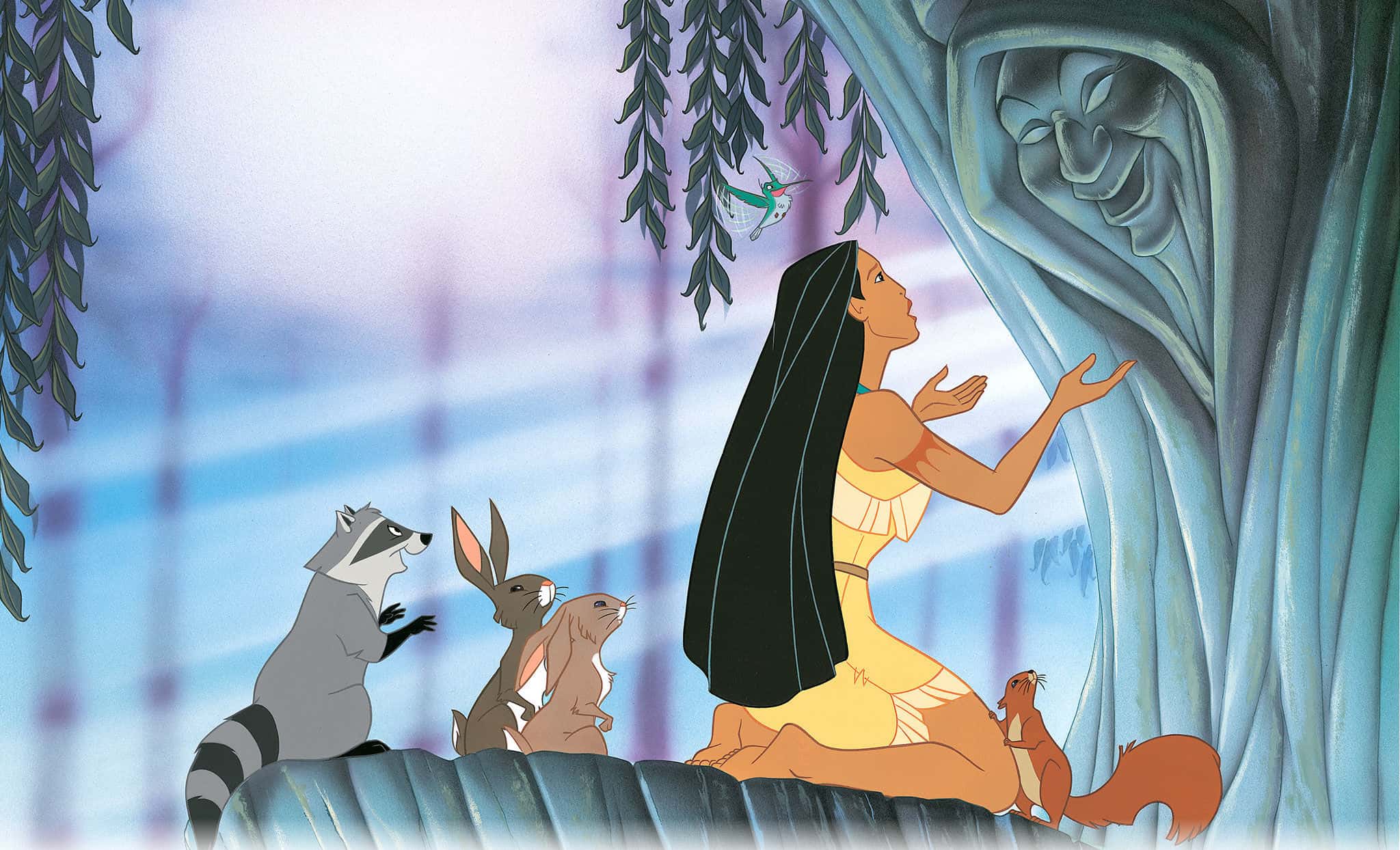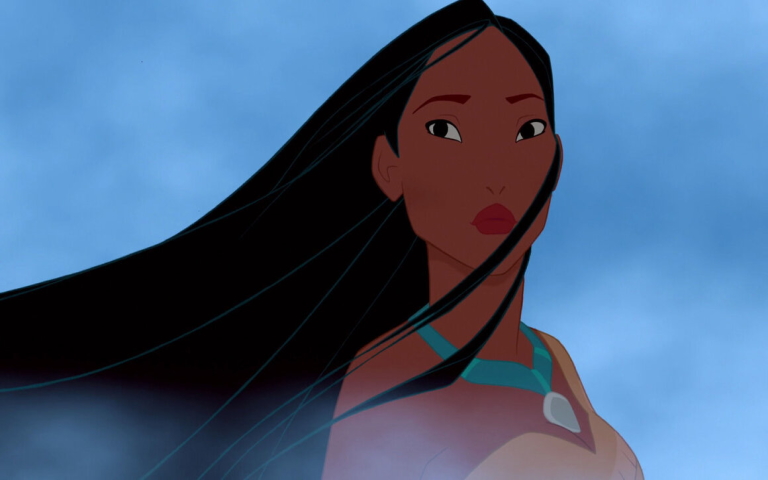Pocahontas, an animation made by the Walt Disney Company, is full of colonial and postcolonial concepts which permeated the whole movie scene and the lyrics of the songs sung by the colonized and colonizer voices as well. In this animation, we have the dichotomy of superior and inferior, Europeans and Indians, civilized and savage, self and the Other. We have different races and ethnicities in this animation. On the one hand, there is an Indian tribe that has its own civilization and life that its people live in nature and Pocahontas is the leading character of this side, while the other side includes British soldiers and a governor attempting to achieve glory and gold. They are traveling to a land they call, New World, to mine gold and get prosperity.
What we think about the people of the New World is that they are a bunch of uncivilized and savage people who could kill Europeans if they attacked. It is exactly here that we witness racism among British soldiers who call Indians savages without visiting them first because they have a kind of fixed presupposition in their minds that one who isn’t like them is a savage or filthy heathen. They see themselves as racially superior. However, Europeans’ arrival to Indian lands, plundered their civilization, they cut their trees, dug their earth, and made a mess.

Radcliff, the Governor, is a greedy man who cares only about himself and is after wealth and glory and sees soldiers and Indians as tools to achieve his own goals. He is able to destroy Indians’ life to gain gold and glory. So, what we see here is neoclassicism which happens when colonizers exploit the natural sources of land at the cost of its destruction. In fact, he plants the seeds of the idea of fighting and uncivilized Indians in soldiers’ heads where at the beginning of the movie, they think of Indians as savage people who may hurt them so they have to kill them.
In fact, the first encounter and interaction between the two main characters of the animation, Pocahontas and John Smith, is significant because we see they give examples of colonization where John introduces London to her or teaches her how to handshake or shows her some objects like the compass. While Pocahontas shows him greeting in her culture. So, there is forming a kind of mutual interaction between these two characters. Although there is no force of teaching the Indian culture to John from Pocahontas, there is from John Smith. He wants to make her like himself and teach her things she doesn’t know, so he refers to her as ignorant and savage.
John Smith is the most courageous member of the crew who has colonizer ideas and thinks colonized people are uncivilized and he should teach them how to live and build decent houses for them just like themselves. It is at that time that a nation can be called civilized. Because of that, he tells Pocahontas you’re uncivilized and savage, and “savage” is a word applied to those who aren’t civilized. In his world, the one who isn’t like them is the Other. Colonizers believe that their own culture is civilized as if they are the center and everything revolves around them. As a result, Pocahontas is the Other who should learn civilization.

On the other hand, we see Pocahontas who has a stable character and resists colonization and tries to show Smith that every creature has its own spirit, life, and name and that because they’re not like him, doesn’t mean they are uncivilized. By showing the forest and the river to him, she helps him release himself from the notion of European civilization, where she tells him; “Listen with your heart”. At first, he was so sure about his conceptions of civilization but then he learned from Pocahontas. She also resisted his colonization when she decided not to leave her people and stay where she belonged but we saw in the animation that John told her I belong nowhere and I don’t have a home. To my surprise the idea of unhomeliness has been reversed here, the subaltern has a home, culture, and belonging but the colonizer doesn’t.
What is clear is that the mechanism of colonial power to recover the subaltern doesn’t work in this animation but it concentrates on the resistance side. Although we see the power of the language of the superior in the film where Pocahontas speaks English. English is the dominant language and Pocahontas doesn’t speak her mother tongue but English. Why didn’t Smith change his language but Pocahontas? Because he is superior and she is inferior.
One of the significant ideas in this animation is Eurocentrism where Europeans consider their culture as the measure to all other cultures, so native people should follow them as John believed Pocahontas has to follow him. But what I can say is that there is no mimicry in the movie except for the language part. Pocahontas has no desire to mimic John’s culture but to have him and stop the fight. She is more of a link for both sides to communicate.

I presume that the movie appears idealist in presenting the notions of colonialism. Radcliff doesn’t seem as serious or dangerous as a villain of a movie should be and the British soldiers stop fighting soon to reconcile with the Indians even though Thomas regrets killing Kocoum. It was like British soldiers were deceived and blind and then they achieve their sight and are able to see because, at the beginning of the movie, they sing these lines that “So we have been told by Virginia Company, for glory, God and gold and the Virginia Company”, that show that they just follow what they have been told to and are means in the hands of a company. However, the Indians, the colonized, are shown as a kind and peace-seeking nation, while Europeans who are supposed to be colonizers are depicted as soft and submitting to love. And at the end, the language of love and understanding wins.



Comments
Very good
this is very good idea
Im happy gamefa has site like this
#love_gamefa🫡
#pishraft